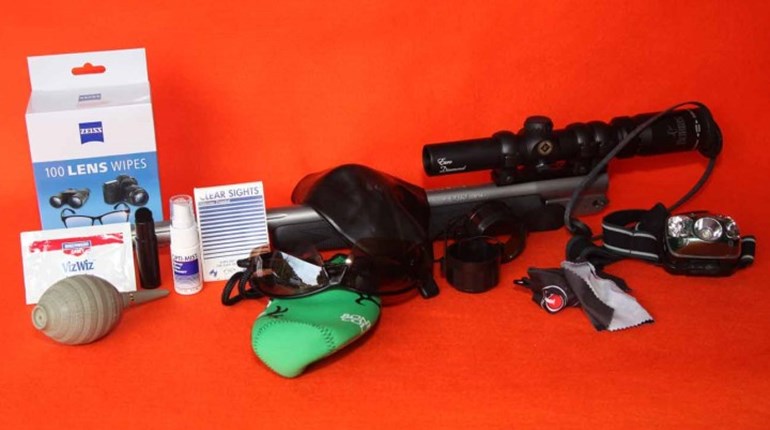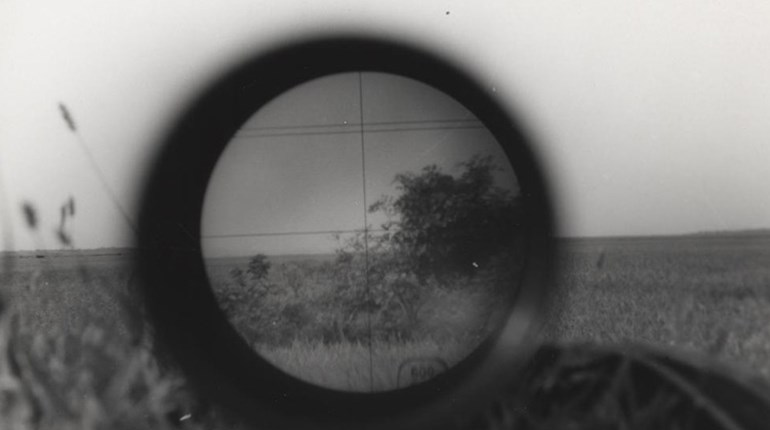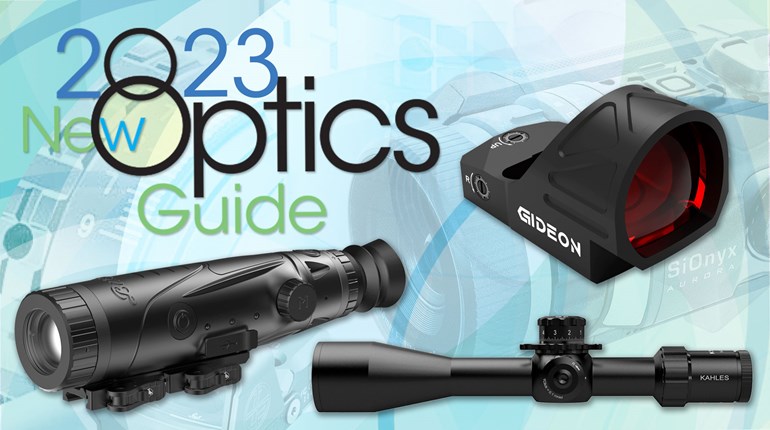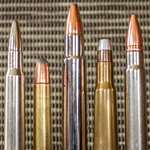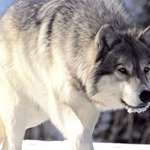
Modern hunting is becoming increasingly electronic, which helps field shooting but burdens the hunter’s daypack. A generation ago about the only technology a hunter carried aside from a rifle was a compass and (maybe) a binocular, but many of today’s hunters also pack a GPS, laser rangefinder, inclinometer, thermometer and electronic wind-gauge, plus a ballistics program. All of it is used to help make the shot.
One side-consequence of this large load has been the attempt to consolidate a few of these items, which is the reason some manufacturers have been incorporating laser rangefinders into riflescopes and binoculars. In many ways, a laser binocular makes more sense, since one binocular can be used with anything from a .223 Rem. to a .338 Win. Mag., instead of buying a laser-rangefinding scope for each rifle.
Bushnell’s Fusion 1600 ARC (Angle Range Compensation) binocular adds two other functions to a laser rangefinder: a ballistics program and an inclinometer. The last is important because of the increasing range of today’s hunting rifles.The up-or-down angle of the shot becomes just as important as the precise distance.
Of all the functions of the Fusion, simply being a binocular is most important. It doesn’t do a hunter any good to carry a multi-function binocular if the optics aren’t good enough to help find game. Bushnell literature tells us that the Fusion is a waterproof, roof-prism bino featuring BaK-4 prisms with PC-3 phase-correction coating, plus Bushnell Rainguard HD. But what does this mean in practical terms?
The test binocular had a slight but definite yellow bias, and there was some color-fringing of hard-edged objects, but all in all the optics are pretty good. I’d rate the Fusion’s glass an 8.5 on a scale from one to 10, entirely usable for hunting either in woods or open country.
The Rainguard HD works even better than the original version. I stuck the objective lenses under a faucet and filled them with water. One shake and all except three or four tiny drops disappeared.
The Fusion’s rangefinder is rated at 1600 yards in favorable conditions on reflective targets. “Favorable” for lasers means cloudy or dim light, on hard-sided objects like buildings or cliffs. Bright sunlight tends to interfere with the laser, and softer targets such as trees or animals don’t reflect the laser beam well.
So much for theory. On a sunny afternoon in late September, I got readings out to 1,606 yards on the sagebrush flats outside my small Montana town, and that reading was on a Rocky Mountain juniper, not a ranch house. The Fusion also gave consistent readings on individual pronghorns out to 700 yards or so, beyond the 500 yards its laser is rated for deer. I haven’t tested many hand-held rangefinders that worked as well, and none that worked better in bright sun.
Before heading into the field, the Fusion’s ballistics program had been programmed for the common 180-grain factory load in the .30-06, sighted-in at 200 yards. I know the trajectory of this load very well, having used it for many years at ranges out to 500 yards, so I could compare the Fusion results with reality. (All programming is easily done with on-off and mode buttons on top of the binocular, and there are numerous options, including display brightness, which helped when testing in bright sunlight.)
The problem with the unit’s ballistics program is that it’s generic. Instead of specifically setting the program for the exact bullet, plus elevation, temperature, etc., the shooter must choose among several trajectory categories from A to J, selecting the category that comes closest to his load’s trajectory. The program display then provides a holdover reading, right under the range reading, but this is only an approximation of reality.
This theoretical holdover is calculated with range-standard conditions (59 degrees, sea level, etc.); at any range much beyond 500 yards any variation from the standard conditions becomes critical, especially elevation and temperature. Combined with a generic trajectory that’s only approximate in the first place, this means that ballistic program in the Fusion isn’t a substitute for a real ballistics program tailored to your exact load.
The longest holdover reading appeared at 725 yards, where the readout indicated 148 inches, but this came across almost dead-level ground. After playing around on the pronghorn flats, I drove up a nearby limestone canyon in the mountains to test the inclinometer. The longest distance ranged there was 495 yards at a 29-degree uphill angle.
The Fusion did have occasional difficulties providing the angle on any shot much above or below 15 degrees. It would display the range quickly, but there’d often be a delay in the angle reading. Sometimes two or three attempts had to be made before the computer came up with the angle—and, consequently, a holdover reading, since the ballistics program also compensates for the angle of the shot.
All of these tests were made with the Fusion’s program in “rifle” mode. It can also be switched to “bow” mode, providing slightly different information on shots out to 99 yards. Instead of giving a holdover readout along with the angle, the program provides a level-ground range, so a bowhunter can just use the correct sightpin.
Overall, the Fusion is definitely worth the price, whether Bushnell’s suggested retail price of about $900 or somewhat lower in the “real” Internet world. The optics are good, the laser rangefinder is extremely good and the angle indicator is useful. When all this is wrapped together in a package about the same weight and size of most 10x42 binoculars, hunters have less to carry into the field—and they can carry it around their necks, instead of inside their daypacks where it might crush lunch.
Specs:
800-423-3537, www.bushnell.com
Type: roof-prism binocular
Magnification: 10X
Objective Lens Diameter: 42mm
Focus Range: 10.5'-infinity
Field of view at 1,000 yds: 305'
Weight: 31 ozs.
Rangefinder Range: 10-1600 yds.
Power Source: (1) 3-volt CR 123 battery
MSRP: $899













